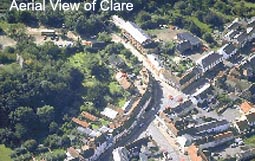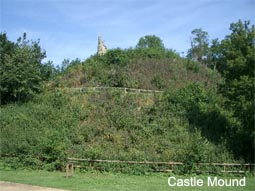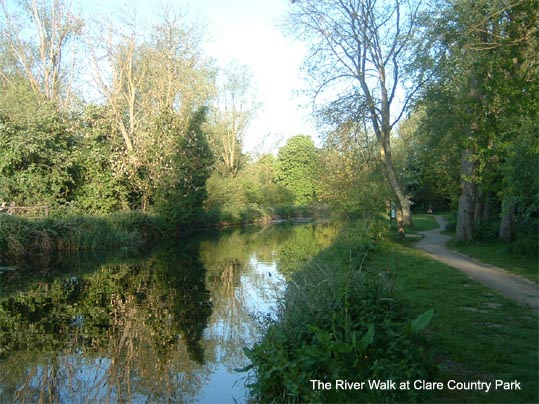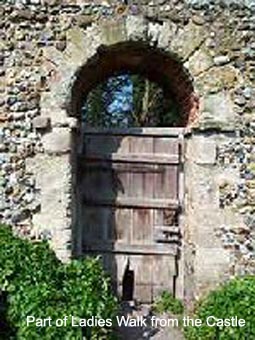

CLARE COUNTRY PARK
- PAST AND PRESENT
By Ian Hornsey
The Last Lord of Clare
Throughout their time the Lords of Clare were immensely influential and it was Richard of Clare, third Earl of Hertford, who helped force King John to sign the ‘Magna Carta’.
Gilbert, the tenth and last in the line of Clare Lords, was killed at the Battle of Bannockburn in 1314, and had no sons as direct descendants so the lands and titles passed to his youngest daughter, Elizabeth (who later became the wife of one John de Burgh).
Elizabeth de Burgh, who founded Clare College, Cambridge,
kept meticulous records about life in the castle until her death in 1360
and it is through her that a great deal of the ancient history of Clare
has been established.
In its pomp, the castle contained a vineyard, extensive kitchen gardens,
and fishponds, and was regularly visited by Royalty and a variety of dignitaries
of the day.
By the 13th century, the castle grounds covered some eleven acres, and
had around 250 inhabitants.
At sometime, probably during the 14th century, a new watercourse
was constructed to divert water from the River Stour to a water mill at
the end of Mill Road. This is known as the ‘New Cut’, and
now receives the main flow from the river.
Clare Country Park comprises 13.2 hectares of semi-natural woodland, open grassland and wetland, including the remnants of a Norman castle and the former Clare railway station, and has enjoyed a recorded history of around one thousand years.
Norman Origins
Towering over the surrounding landscape throughout the last eight centuries has been a fragment of the stone-built castle keep, which was erected on the 70’ high motte by the de Clare family during the 13th century.



This substantial structure replaced an earlier, wooden keep, which had been constructed during the 11th century. Indeed, history indicates that the original fortress was founded by Richard FitzGilbert, also known as Richard de Bienfaite, around 1070 (certainly, soon after the Norman Conquest), and consisted of a motte and two baileys.
FitzGilbert (who later became known as Richard de Clare) had been given the land in Clare, as well as other land in Kent, Surrey and Worcester, by his cousin, William the Conqueror, as a reward for his help in defeating Harold at the Battle of Hastings.
In return for these huge bequests, FitzGilbert was obliged to provide the new king with sixty knights, who, in turn, would inherit and rule smaller units of land called ‘manors’.
Closure of the Castle
Sometime during the reign of Edward IV (1461-81), the castle reverted to being Crown property, and with everything from then on being run from London, it gradually fell into disrepair, and eventually ruin.
During the 16th century, materials from the disused castle were removed and used to build houses and other structures within Clare, until all that remained were the earthworks, part of the stone keep, and small sections of the inner bailey wall. Over the years, the castle lands have passed into several ownerships, and parcels of land have been leased out for various purposes – mainly associated with the rearing of livestock.
Clare Country Park The Arrival of the Railway
Clare Country Park Modern Times
Clare Country Park Managing the Country Park